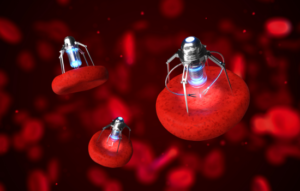Nanotechnology, the science of manipulating atoms and molecules to create new materials and devices at the nanoscale, promises to revolutionize various fields from medicine to electronics. However, working at such an infinitesimal scale requires environments that are almost entirely free of contaminants. Enter cleanrooms, specialized facilities designed to provide ultra-pure conditions. When nanotechnology meets the pristine environment of a cleanroom, magic happens. This synergy is ushering in a new era of advancements that might sound straight out of a sci-fi novel.
Why are Cleanrooms Critical for Nanotechnology?
Nanotechnology deals with structures and devices on the scale of nanometers, with one nanometer being a billionth of a meter. At this scale, even the tiniest particles, be it dust or microbes, can cause significant disruptions. Imagine trying to construct a miniature city on a tabletop, but every grain of sand or speck of dust could destroy your work. That’s the challenge faced in nanotech.
Cleanrooms provide the necessary controlled environment by using specialized air filters and maintaining rigorous standards. The rooms have fewer particles than what’s found in regular ambient air, ensuring that nanoscale products and research are unimpeded by contaminants.
 Nanotechnology Breakthroughs in Cleanroom Settings
Nanotechnology Breakthroughs in Cleanroom Settings
In the sanctity of cleanrooms, nanotechnology has birthed several innovations:
- Nanomedicine: Scientists are developing nanoscale robots that can deliver drugs directly to diseased cells, reducing side effects and improving the efficiency of treatments. Cleanrooms ensure these nano-robots are created without any impurities that could hamper their function.
- Nanoelectronics: As electronics shrink, their components approach the nanoscale. Cleanrooms play a pivotal role in the production of these tiny components, ensuring that they function optimally without contamination.
- Nano-fabrication: This involves the manufacturing of devices at the nanoscale. In the controlled environment of a cleanroom, materials can be layered, etched, and constructed with unparalleled precision.
- Nanocomposites: By mixing different nanomaterials, scientists can produce compounds with unique properties. Cleanrooms ensure that these properties aren’t compromised by external contaminants.
The Challenges and the Road Ahead
While cleanrooms offer a haven for nanotechnology endeavors, challenges persist. As nanotech aims for even smaller scales, the requirements for cleanrooms become more stringent. Keeping up with these demands means continuous advancements in cleanroom technology itself.
Moreover, the synthesis of nanomaterials often requires specific conditions, such as particular temperatures or atmospheres. These requirements present another layer of complexity in designing and maintaining cleanrooms tailored for nanotechnology.
Despite these challenges, the potential rewards are too significant to ignore. From faster computers to more efficient solar panels, and groundbreaking medical treatments, the possibilities are boundless.
Conclusion
Nanotechnology, a field that harnesses the potential of atoms and molecules, is at the forefront of scientific innovation. However, its success leans heavily on the controlled environments of cleanrooms. As we dive deeper into the nanoscale world, the symbiotic relationship between nanotechnology and cleanrooms will only grow stronger. Together, they hold the key to unlocking technologies that can reshape our world, one nanometer at a time.
